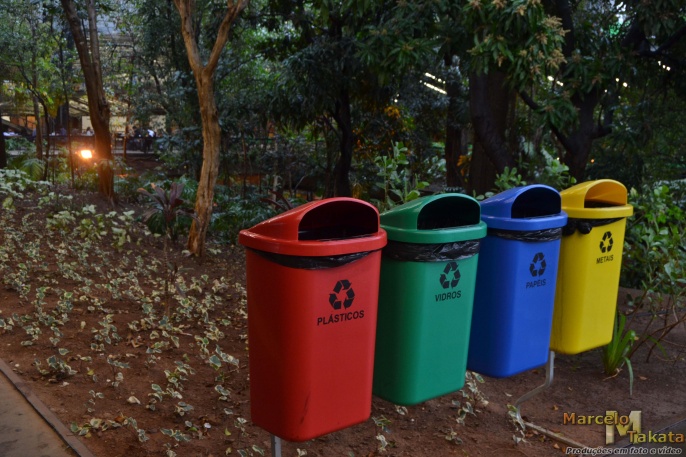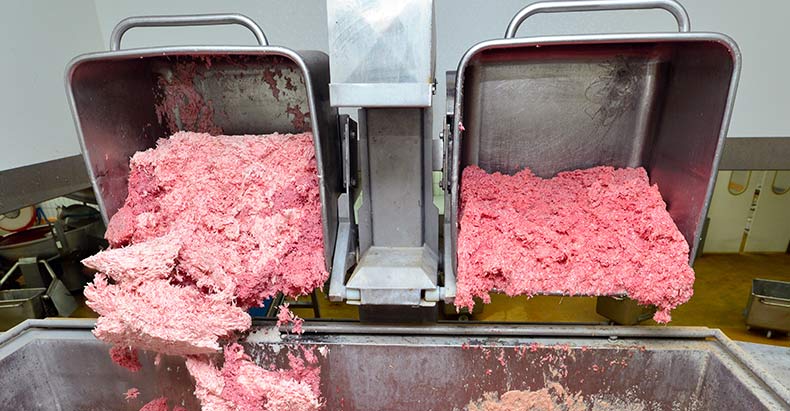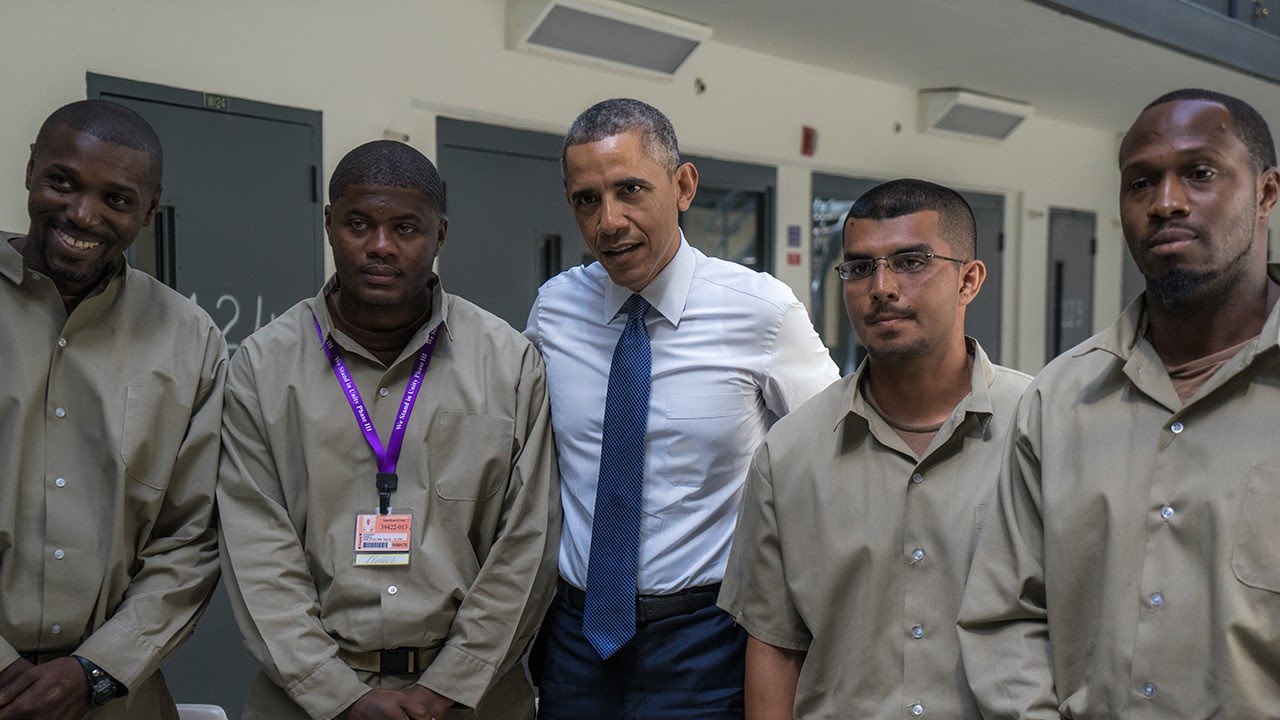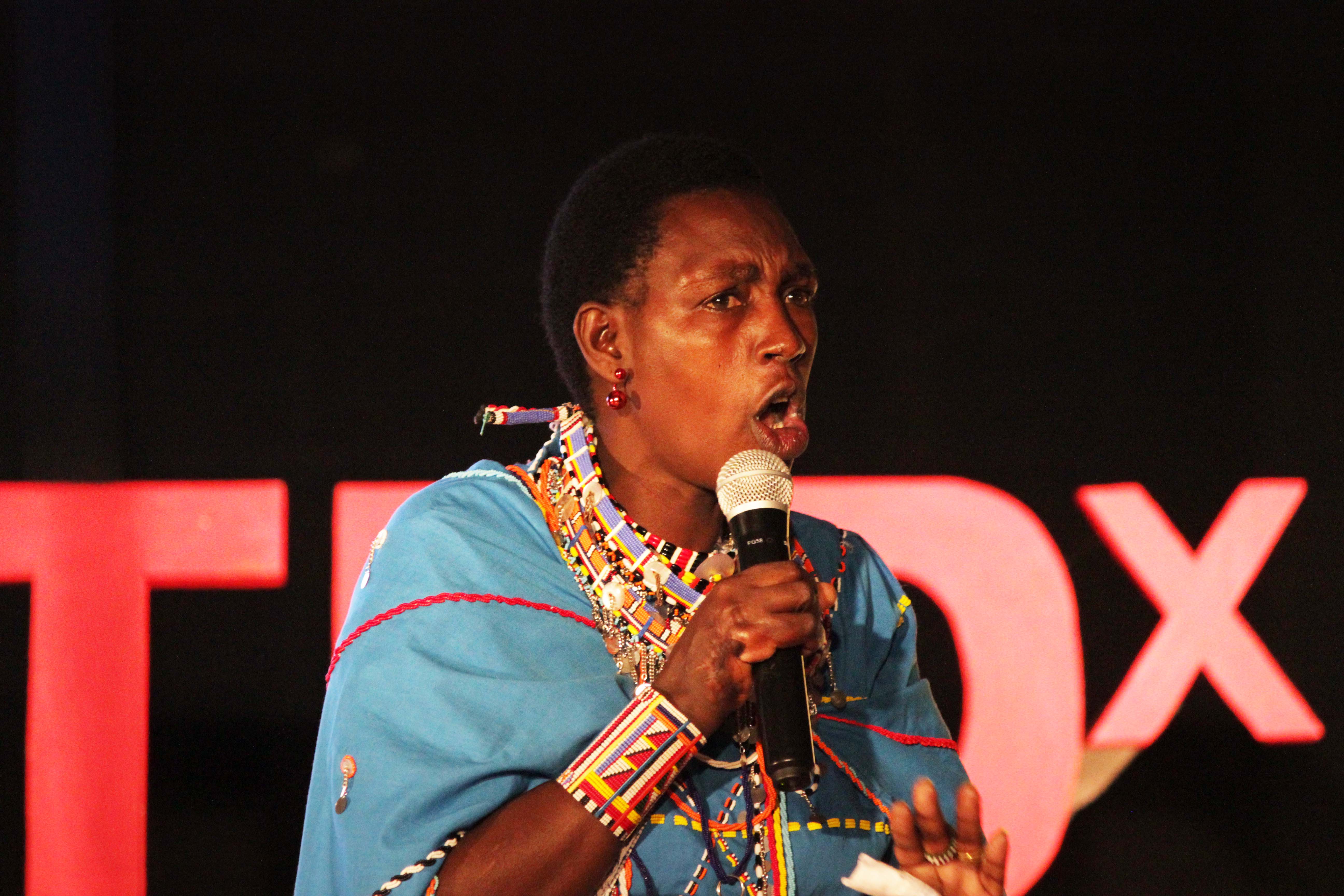Seattle. Sixth City to Sue Monsanto Over PCB Contamination
The city of Seattle is suing agrochemical giant Monsanto over the contamination of the Lower Duwamish and city drainage pipes with polychlorinated biphenyls (PCBs).
The complaint, filed Monday in federal court, alleges that Monsanto knew how toxic PCBs were to humans and the environment, but continued to produce and sell the chemicals for decades anyway. Seattle is now the sixth city to sue Monsanto over PCB contamination, following San Jose, Berkeley, Oakland, San Diego, and Spokane.
“Long after the dangers of PCBs were widely known, Monsanto continued its practice of protecting its business interests at our expense,” City Attorney Pete Holmes said in a statement. “The City intends to hold Monsanto accountable for the damage its product wreaked on our environment.”
The Lower Duwamish is now considered a federal Superfund site, ranking as one of the most toxic waterways in the United States. The EPA estimates that the full cleanup of the waterway will cost $342 million.
According to the city, PCBs have been detected in 82 percent of drainage pipe samples and 73 percent of street right-of-way catchment basin samples in Lower Duwamish drainage basins. PCB exposure has been linked to several different different types of cancers, as well as endocrine, reproductive, immune system, and nervous system issues. Exposure is wide-ranging; PCBs have been found in everything from fish to human breast milk.
I’ll be heading to a 10:30 press conference at City Attorney Pete Holmes’ office to learn more. In the meantime, read the complaint here.
100 Amazonian Communities Construct Government To Protect Their Lands
The Wampis people of Peru recently created the nation’s first Autonomous Indigenous Government, which does not seek independence from Peru but intends to protect their rights and their territory.
On November 29, in the town of Soledad, the Wampis announced the formation of their autonomous government that brings together 100 Wampis communities, representing over 10,000 people that reside in the northern Amazonian part of Peru which extends across 3.2 million acres (roughly the size of the U.S. state of Connecticut).
The process that lead to the formation of the new government took place over several years, with over 50 community meetings and 15 general assemblies according to Wampis officials. They were inspired to create the new government by the United Nations Declaration on the Rights of Indigenous Peoples as well as Peruvian laws that acknowledged indigenous rights.
The motivation for the new government also grew out of frustration with how Wampis territory was being sold or given away, without their consent, to various businesses.
One of the Wampis leaders, Andres Noningo Sesen, explained some of their goals in a press statement released in December.
“We will still be Peruvian citizens but now we will have our own government responsible for our own territory. This will allow us to defend our forests from the threats of logging, mining, oil and gas and mega dams. As every year goes by these threats grow bigger,”
-Andres Noningo Sesen, Wampis Leader
One of the defense related examples given by Wampi leaders is their sustained resistance to gold mining operations in their territory by the Afrodita, S.A. Company which was finally ordered to suspend operations along the Cenpea and Maraño rivers. Both rivers suffered from severe mercury and cyanide stemming from mining activities in the area and indigenous resistance to the pollution is credited with forcing the suspension.
“This unity will bring us the political strength we need to explain our vision to the world and to the governments and companies who only see the gold and oil in our rivers and forests. For them, too often we are like a small insect who they want to squash. Any activity planned in our territory that will affect us will now have to be decided by our own government which represents all our communities,”
-Andres Noningo Sesen, Wampis Leader
The Wampis communities started the process towards autonomy by passing a statute known as the Statute of the Autonomous Territorial Government of the Wampis Nation, in which they outlined their plans for the future including protection of religion, spirituality, education, language and the recovery of ancestral place names.
While Peruvian officials have not publicly acknowledged or commented on the formation of the Wampis Autonomous Indigenous Government, Wray Perez Ramirez, the new President of the Autonomous Territorial Government has expressed confidence in their effort.
“We trust that the Peruvian State will support our initiative. This will assist in the compliance of their obligations to respect the fundamental rights of the Indigenous Peoples to determine their own future,” Ramirez said.

![]()
5 Apps That Can Improve The World
It happens to us all. We are doing our daily commute to work or school and we switch on the backlight of our smartphones to shop around. What have the creatives made this week? What new ingenious application can improve my life? – But, hold on, what if your next favourite app can not only improve your life, but simultaneously …
Johnny Depp Intends To Buy Indian Reservation And Gift It Back To The Native American People
Actor Johnny Depp wants to purchase the historical landmark Wounded Knee and gift it back to the Native American people to help make right what went so wrong in 1890. by Amanda Froelich
In an interview with The Daily Mail on Sunday, well-known actor Johnny Depp disclosed that he intends to buy Wounded Knee, a national historic landmark, and gift it back to the Indian people. He shared that he is ready to spend millions in order to give control back to those that should have inherited the land, and help make right what went so wrong back in 1890.
“It’s very sacred ground and many atrocities were committed against the Sioux there,” he said. “And in the 1970s there was a stand-off between the Feds (Federal government) and the people who should own that land. This historical land is so important to the Sioux culture and all I want to do is buy it and give it back. Why doesn’t the government do that?“
Perhaps it was Depp’s stint playing the role of Tonto in the box office production The Lone Ranger that inspired him to pursue such action; whatever the inspiration, the activism will most certainly be appreciated by many.
Depp spent a massive amount of time doing research about the various tribes and received the approval from many Native American groups before the filming of The Lone Ranger began. His respect for the Native American culture runs deep, and he wanted to make sure that all those involved with the production were doing right by “the Indian” in the way they portrayed the various tribes.
“The idea was to give back to them and to make sure that we got it right,” he said in the lengthy interview.
 “This picture of the Miniconjou Sioux band was taken near the site of the Wounded Knee massacre one month before the December 1890 massacre where hundreds of Indians were killed.”
“This picture of the Miniconjou Sioux band was taken near the site of the Wounded Knee massacre one month before the December 1890 massacre where hundreds of Indians were killed.”
Credit: Corbis
According to the news source, Depp is intent on following through with the aforementioned plan. The asking price for Wound Knee is $3.9 million, which is a fraction of what Depp makes from one production. That said, there is little standing in the way of him keeping true to his promise.
“I am doing my best to make that happen. It’s land they were pushed on to and then they were massacred there. It really saddens me,” he stated.
The area near Wounded Knee Creek on the Lakota Pine Ridge Indian Reservation (in South Dakota) is where the last major battle of the American Indian Wars took place. The fight reportedly began when an elderly tribesman refused to hand over his weapon. Troops attacked, and at least 150 members of the Lakota tribe – including men, women, and children – were killed.
Honoring the Native American culture by purchasing the historical location will be a major step in helping to make right what went so wrong over a hundred years ago. The event has caused outrage from historians as at least 20 American soldiers were awarded the Medal of Honor for their role in the massacre. Now, at least, the public is more educated on the solemn history and can do what’s right moving forward.
What are your thoughts on this news? Comment below and share this article!
Report On Marijuana Overdose In 2015
Marijuana legalization has been the talk of North America for years now. It’s arguable that one of the biggest campaign promises made by Canada’s new Prime Minister, Justin Trudeau, was his goal to legalize cannabis countrywide. In the US, cannabis is legal in some form in 23 states, and with that we see a staggering number we should all consider. The number of Americans who fatally overdosed on cannabis in 2015 was: 0.
No one. Not a single person.
This of course is a huge increase from the year before which was also, zero. So it begs the questions: why is marijuana illegal? And why are other substances like alcohol and pharmaceuticals legal, yet they actively contribute to killing people in large numbers?
Hemp and cannabis became illegal back in 1937 for an all too common reason, it threatened the businesses of powerful people. You can grab the full ridiculously political story on that in an article I wrote about hemp and how they used cannabis to outlaw it back in 1937.
Legal Dangerous Substances
I’m not going to be one to say that it’s the substance’s fault all the time, because it’s not. I’m also not going to say whether things need to be legal or illegal right now. Instead I’m going to focus on the reality of what is happening.
Alcohol is legal, and very accessible in our society. It’s seen as a good time and something we can drink daily to relax after work. This year, the substance has aided in killing Americans at a rate that hasn’t been seen in roughly 35 years according to the Washington Post.[1] Reports state that more than 30,700 Americans died from alcohol-induced causes in 2015. This number does not include those who died as a result of alcohol related deaths like drunk driving or other accidents. If it did, the number would be close to 100,000.
According to a 2006 report in American Scientist, “alcohol is more lethal than many other commonly abused substances.” The report goes on to also mention:
Drinking a mere 10 times the normal amount of alcohol within 5 or 10 minutes can prove fatal, whereas smoking or eating marijuana might require something like 1,000 times the usual dose to cause death.
But it may not be fair to say that marijuana doesn’t have downsides because clearly it does. It’s speculated that it can cause brain developmental challenges in people under the age of 25 who smoke regularly, as it affects grey matter and it can of course also lead to drugged driving which can also be dangerous.[3] But are the dangers as bad as alcohol? And can we truly compare therapeutic values? What about when we look at pharmaceuticals?
Here are 2 graphs from the National Institute on Drug Abuse:


Looking at reported cases in the US, we see that prescription drugs prescribed by a doctor, as well as pain reliever addictions, have led to a combined 42,000 or so deaths in 2014. This is even more than alcohol! Strictly from a statistics point of view, prescription drugs, while having value in other areas, come with a great number of downsides and also happen to be the biggest business. Is there a conflict of interest in handing out these drugs when the ability to make money is attached? Do more drugs than are needed enter our society? The obvious answer is yes, when you look at how often drugs are not only wrongly prescribed, but are also the first option to fix something fickle before we even look at the potential behind lifestyle changes.
Public Demand
Although the public in North America in general seems to be pushing for the legalization of marijuana, it is still opposed heavily. Some groups include the pharmaceutical lobby, who would lose big in profits, as well as police unions who would lose federal budget for the war on drugs. You can begin to see our society runs less on common sense and more on political and monetary rigidity with groups all working against each other in their own interest.
But to be honest, legalization is a whole other topic, because I believe it is not quite as good as people hype it up to be. Some challenges that would come in include who controls marijuana growth, the quality of what is made available, and the manipulation of that product.
Interestingly enough, among all 2016 presidential contenders, Democratic hopeful Sen. Bernie Sanders (I-Vt.) is the only one who outright supports the legalization of marijuana. As of now the substance is classified as a Schedule 1 drug, up there with heroin and LSD. (which is a whole other topic of discussion)
Final Note
Entirely blaming a substance for the cause of people’s deaths and addictions is not an effective way of looking at the problem, nor is regulation of those substances going to be the answer in helping people. We have a large disconnect in our society in helping people with mental, emotional, and physical challenges and we are obsessed with isolating issues into black and white when most of the time they are not. I believe many of these deaths are a sign of other challenges in our society that we are opposed to looking at such as a lack of enjoyment and fulfilment in our jobs, not doing what we love, not processing our emotions, treating illness as purely physical and so forth. Until we can address many of these factors and implement solutions, we will always be creating addicts who find substances to get addicted to in order to compensate for other areas of their lives. This isn’t to say things like alcohol and prescriptions drugs are good and therefore should be so easily available to people, but more so to suggest that we all look at the full picture.
Sources:
2. https://www.americanscientist.org/libraries/documents/200645104835_307.pdf
3. http://www.thecannabist.co/2014/11/17/marijuana-young-brain-study/23251/
H/T: http://www.huffingtonpost.com/entry/marijuana-deaths-2014_56816417e4b06fa68880a217
Vancouver commits to run on 100% renewable energy
Vancouver has become the latest city to commit to running on 100% renewable energy. The city of 600,000 on Canada’s west coast aims to use only green energy sources for electricity, and also for heating and cooling and transportation.

Cities and urban areas are responsible for 70-75% of global CO2 emissions and that’s where “real action on climate will happen” said Park Won-Soon, Mayor of Seoul, South Korea at the ICLEI World Congress 2015, the triennial sustainability summit of local governments where Vancouver made the announcement.
“We are the green tide coming together to save the world from climate change,” Park said to nearly 15,000 members of local government including more than 100 mayors.
Andrea Reimer, Vancouver’s deputy mayor told the Guardian: “There’s a compelling moral imperative but also a fantastic economic case to be a green city.” The 100% goal is likely to be set for a target year of 2030 or 2035 for heating/cooling, with transport taking until 2040 to 2050. These could happen sooner with national and provincial government support.
People and businesses want to live and work in clean and green urban areas, said Reimer, adding that whoever develops expertise in shifting to 100% renewable energy will own the 21st century.
Vancouver can achieve 100% renewable electricity in a few years but heating, cooling and transportation will take longer. The city’s ambition is to be the world’s greenest city by 2020 despite the fact Canada has had one of “the most environmentally irresponsible national governments” for the last 10 years, she said.
Park announced that Seoul, with 11 million people and growing fast, will reduce its energy use and increase renewable generation, including rolling out 40,000 solar panels to households by 2018 and 15,000 electric vehicles. By 2030 it is hoped that CO2 emissions will be cut by 40%.
More than 50 cities have announced they are on their way to 100% renewable energy including San Diego and San Francisco in California, Sydney Australia, and Copenhagen. Some are aiming for 2020, others by 2030 or 2035.
Some, like Reykjavik, Iceland, are already there for electricity and heat. The entire country of Costa Rica was powered by renewables for 75 consecutive days this year.
“Just three years ago we’re saying 100% renewable really is possible, now many cities and regions are doing it,” Anna Leidreiter, coordinator of the Global 100% RE Alliance – an international alliance of organisations pushing for a shift away from fossil fuels.
If large utilities or energy companies are in control it will slow down attempts to tackle climate change, Leidreiter said. “The business model for renewables is completely different, it should benefit people not corporations.”
Ruling in Mexico Sets Into Motion Legal Marijuana

The Mexican Supreme Court opened the door to legalizing marijuana on Wednesday, delivering a pointed challenge to the nation’s strict substance abuse laws and adding its weight to the growing debate in Latin America over the costs and consequences of the war against drugs.
The vote by the court’s criminal chamber declared that individuals should have the right to grow and distribute marijuana for their personal use. While the ruling does not strike down current drug laws, it lays the groundwork for a wave of legal actions that could ultimately rewrite them, proponents of legalization say.
The decision reflects a changing dynamic in Mexico, where for decades the American-backed antidrug campaign has produced much upheaval but few lasting victories. Today, the flow of drugs to the United States continues, along with the political corruption it fuels in Mexico. The country, dispirited by the ceaseless campaign against traffickers, remains engulfed in violence.
“It’s the drama behind all of our efforts,” said Juan Francisco Torres Landa, a corporate lawyer who was one of the plaintiffs in the Supreme Court case.
The marijuana case has ignited a debate about the effectiveness of imprisoning drug users in a country with some of the most conservative drug laws in Latin America. But across the region, a growing number of voices are questioning Washington’s strategy in the drug war. With little to show for tough-on-crime policies, the balance appears to be slowly shifting toward other approaches.
Uruguay enacted a law in 2013 to legalize marijuana, though the creation of a legal marijuana industry in the small country has unfolded slowly. Chile gathered its first harvest of medical marijuana this year. In Brazil, the Supreme Court recently debated the decriminalization of marijuana, cocaine and other drugs. And Bolivia allows traditional uses of coca, the plant used to make cocaine.
Many leaders in Latin America have called for a shift in policy, including President Juan Manuel Santos of Colombia. In May, his government ordered a halt to the aerial spraying of illegal coca fields, rejecting a major tool in the American-backed antidrug campaign because of concerns that the herbicide spray causes cancer.
Though Mr. Santos is one of Washington’s closest allies in the region, he has pointed out the incongruity of jailing poor farmers for growing marijuana while it is slowly being decriminalized in the United States.
“Every country in the world signed up to a treaty that prescribed a prohibitionist and criminalized approach to dealing with drugs that was one-sided,” said John Walsh, a senior associate at the Washington Office on Latin America, a human rights group. “That basic response doesn’t work anymore.”
Mexicans seeking a new strategy have also been struck by the situation. “We are killing ourselves to stop the production of something that is heading to the U.S., where it’s legal,” said Armando Santacruz, another plaintiff in the case.
Still, few think that legalizing marijuana will significantly reduce drug violence or weaken the gangs.
Although the rising production of higher-quality marijuana in the United States reduces demand for Mexican imports, experts say that Mexican gangs continue to account for an important percentage of the American supply.
As it stands, marijuana accounts for more than a fifth of revenues generated by cartels, around $1.5 billion a year, according to a 2010 report by the RAND Corporation.
The one thing that could significantly affect the cartels’ marijuana business is legislation in the United States. As marijuana growing for commercial purposes in America expands, demand for Mexican marijuana could eventually dry up.
Pro-marijuana activists have scored a remarkable string of election wins in recent years even though the drug remains illegal under federal law. Twenty-three states and the District of Columbia have passed laws permitting medical marijuana, and four states also allow recreational use by adults.
“In the long run, as the U.S. legalizes marijuana, Mexico is going to have a tough time competing with lawful American suppliers,” Mr. Walsh said. “That doesn’t mean they won’t have a business plan, it’s just that marijuana will be removed from it.”
Marijuana is just one of many sources of income for the cartels, which smuggle narcotics across the border to the United States and run kidnapping and extortion rings at home. The criminal infrastructure will persist whether or not marijuana use is legal.
“The existing laws don’t reduce violence, either,” said Catalina Pérez Correa González, a law professor at CIDE, a university in Mexico City.
The legal ruling on Wednesday barely referred to the bloody backdrop of the drug war. Instead, Justice Arturo Zaldívar wrote an 88-page opinion based on principles of human rights, arguing that the state recognizes an individual’s autonomy to engage in recreational activities that do not harm others.
The number of marijuana users in Mexico is believed to be small. One 2011 drug-use survey estimated that 2 percent of Mexicans had smoked marijuana in the past year. Although that figure is probably low, it is less than the 7.5 percent of people in the United States who said in a 2013 survey that they had used marijuana in the previous month.
If Mexicans are allowed to grow and consume their own marijuana, casual users will not have to commit a crime to obtain it. Now, marijuana users are currently vulnerable to extortion by the police and are locked up by the thousands every year on charges of consumption and possession.
“There is an enormous institutional and social cost to enforcing the laws against marijuana,” said Ms. Pérez Correa, whose surveys of state and federal prisons suggest that 60 percent of the inmates sentenced for drug crimes were convicted in cases involving marijuana. “How many resources are being used up to reduce these low-impact crimes?”
The ruling on Wednesday was the culmination of an effort to change the law by four members of a prominent Mexican anticrime group, Mexico United Against Crime.
Mr. Torres Landa and Mr. Santacruz formed an alliance with two other people, called the Mexican Society for Responsible and Tolerant Consumption – the Spanish acronym is Smart. Their group applied for a license from Mexico’s drug regulatory agency to use marijuana, but, as expected, was turned down. Their appeal of that decision eventually reached the Supreme Court.
Yet the ruling on Wednesday applies only to their petition. For legal marijuana to become the law of the land, the justices in the court’s criminal chamber will have to rule the same way five times, or eight of the 11 members of the full court will have to vote in favor.
If the court decisions continue in that direction, they will be flying in the face of public opinion. Mexicans are so opposed to legalizing marijuana that a leading pollster told the Smart group not to bother with a survey, Mr. Santacruz recalled, or to limit it to young people.
But Adalí Cadena Rosas, 20, a pharmacy worker in Mexico City, bemoaned the decision on Wednesday. “I mean, we already have so many drug addicts,” she said. “This is only going to make things worse.”
On the other hand, Carlos Canchola, 87, a retiree, rejoiced when he learned of the ruling.
“This is great news,” he said. “People like me will be able to acquire it for rheumatism.”
President Enrique Peña Nieto said his government would respect the Supreme Court’s decision, but his government, legislators and security and health officials all oppose legalization, as does the Roman Catholic Church.
Mr. Santacruz is determined to change minds. Invoking the specter of Mexico’s most notorious drug kingpin, Joaquín Guzmán Loera, known as El Chapo, he likes to remind people: “Bad regulation is better than whatever regulation El Chapo and the narcos can provide.”
Local Brazilian Start-Ups Challenge Status Quo; Experiment with New Ways of Doing Business
As Latin America’s largest economy and the host of the 2016 Olympic Games, Brazil is a regular fixture in international news. It’s also widely recognized for its agenda on sustainable development issues, especially for reducing deforestation and pioneering clean energy. However, progress remains uneven as the country is struggling to come to terms with one of the worst droughts in history, a chain of corruption scandals and continuing dependence on fossil fuels.
SustainAbility recently met with Álvaro Almeida and Rúbia Piancastelli of report:sustentabilidade, Brazil-based sustainability advisory firm and organizer of Sustainable Brands Rio, to talk about the country’s changing sustainability landscape.

Aiste Brackley: How would you describe the current corporate sustainability landscape in Brazil? What were the dominant themes at this year’s conference?
report:sustentabilidade: With our conference, we seek to push the boundaries of conversation about corporate sustainability in Brazil, challenging ourselves and businesses to imagine what is possible. This year we decided that it was the right time to explore the topics of circular economy and innovation. While many Brazilian companies are working on reducing waste, their thinking predominantly remains embedded in linear models. We would like to challenge companies to think how the circular approach could be integrated into a business model from the very beginning. It is an entirely new way of thinking about design and production.
We also think that Brazilian businesses are ready for a more rigorous conversation about the sharing economy and business model innovation in large companies. This question is especially relevant in the context of the increasingly vibrant social innovation scene. The start-up scene is burgeoning in Brazil with many of them offering innovative solutions that large companies could potentially adopt and scale.
Could you share some examples of innovative corporate sustainability strategies by local companies?
Probably the most widely known example is that of the local beauty products manufacturer Natura. It is leading the field by setting ambitious net positive goals and planning its sustainability strategy as far as 2050. Coca-Cola and Natura are now jointly working with local açai growers in the Amazon to improve their livelihoods and reduce deforestation, a great example of collaboration between large companies.
Another interesting case is , Brazil’s largest retailer, which has also been a leader on sustainability issues. GPA has pioneered a progressive model of working with communities in the Rio de Janeiro and San Paolo neighborhoods, where its supermarkets are located.
In a way, many sustainability leadership examples in Brazil point to collaboration. Getting companies to unite their efforts, seeking synergies and common ground between parallel initiatives will be key to achieving impact.
Our surveys show that Latin America is one of the few regions where local companies dominate sustainability leadership rankings. In many other parts of the world, Unilever and Patagonia are universally seen as dominant players.
Yes, we also see that trend. We ran a survey of conference participants and Natura was overwhelmingly regarded to be the front-runner, with Itaú Unibanco and Unilever taking the second and third spots, respectively.
While we are seeing a lot of progress, for many businesses integrating sustainability into core operations remains to be a major challenge. It is often coupled with lack of a long-term vision and a focus on immediate, short-term issues.
To what extent is this absence of long-term perspective a result of relatively nascent corporate sustainability agendas? Or is it rather a consequence of the current political and economic climate?
Economic and political climate is very important but many Brazilian companies are also facing a challenge of progressing from the very basic understanding of sustainability as simply mitigating negative effects to actually creating net positive impact. I believe this transition is the next big mission for Brazilian companies.
The current economic crisis and corruption scandals have a big impact on business and especially on local companies that primarily rely on the Brazilian market. While global companies are also impacted, they are more resilient to these fluctuations. In their sustainability strategy, most multilateral corporations including Dow Chemical, Unilever, L’Oréal, rely heavily on guidance from corporate headquarters. However, in the past couple of years we have seen the Brazilian branches of some large international companies adopt sustainability strategies that are uniquely designed to address local challenges in Brazil, and that is a very welcome development.
What other sustainability issues are now top-of-mind for companies in Brazil?
Recent corruption scandals have had an effect on many aspects of life in Brazil, including business. Just like in so many other parts of the world, water scarcity is a major concern. The current water crisis is increasingly being linked by scientists to deforestation in the Amazon, another major challenge facing the country. Reducing waste is also a major issue on the corporate sustainability agenda. New environmental regulations, introduced a few years ago, are forcing companies to introduce new measures to reduce waste and rethink packaging. There is also a lot of interest by Brazilian companies in Sustainable Development Goals, with many pursuing partnerships through the UN Global Compact.
And while the Brazilian government is heavily invested in lead-up negotiations to the UN climate change conference in Paris (COP21), for most companies, the energy conversation is first and foremost about efficiency. Our economy remains to be heavily reliant on fossil fuels and hydropower and regulatory incentives are still lacking to advance other forms of renewable energy.
What is the next frontier for Brazilian companies?
Brazilian companies understand well the relevance of CSR and in the last 15 years have made a lot of progress improving sustainability management and embedding it in their governance. But I believe that the understanding of corporate responsibility remains limited. The next step for companies is to create solutions to the challenges that our society faces today and transform those challenges into business opportunities. This is the next big frontier and we are already seeing many promising examples that this transformation is under the way.
This is the third installment in a series of four blogs about Latin America. To find out more about sustainability issues shaping the debate in Latin America, view the presentation deck and listen to the recording of our mid-year Trends webinar. And, you can read our first and second installments of the series, too. For over 25 years SustainAbility has provided companies with timely intelligence and interpretation of emerging sustainability issues and trends. For more information about our bespoke trends service and how your company can benefit from it, please contact Aiste Brackley.
Consumer Reports Study Finds that Nearly All Ground Beef Sold in America Has Feces in It
The megalithic federal bureaucracy known as the U.S. Department of Agriculture is made up of 100,000 employees who are stationed at 4,500 locations across the country. Their mission statement, in part, reads “to promote agriculture production that better nourishes Americans.”
A recent study by Consumer Reports, however, shows that nourishing Americans consists of feeding them deadly superbugs, food poisoning pathogens, and feces.

While it’s not surprising to the readers of the Free Thought Project that the US government could fail so miserably in their stated mission, this recent study exhibits an unrivaled level of incompetence within this behemoth bureaucracy.
Consumer Reports tested several hundred packages of ground meat from stores across America, and their findings were shocking, to say the least.
According to the report,
New lab tests conducted by Consumer Reports found that of the 300 packages of ground beef purchased in stores across the country, almost all contained bacteria that signified fecal contamination.
More than 40 percent contained Staphylococcus aureus. Almost 20 percent contained Clostridium perfringens, which causes nearly 1 million cases of food poisoning annually, many related to beef.
A significant amount also contained superbugs, bacteria that are resistant to three or more classes of antibiotics. A key reason is the overuse of antibiotics on cattle farms.
The irony here is that local organic farmers who have harmed no one, are being raided by SWAT teams for selling raw milk, eggs, or grass fed beef. Meanwhile, millions of people are getting sick and dying across the country by government-subsidized factory farms.
In The Omnivore’s Dilemma, Michael Pollan points out how concentrated animal feeding operations (CAFOs), are dependent upon the cost of corn remaining low.
The government ensures these low corn prices by throwing billions of dollars a year the top 1 percent of corn farms in the United States. Since 1995, a whopping $85 billion has been taken from taxpayers and given to corn producers; all of this so you can have poop in your burger.
Aside from the horrific results of feeding corn to cows, there is also the apocalyptic problem of creating superbugs by massively dosing the factory farmed cattle with antibiotics to counter the horrendously dirty conditions in which they live.
“That practice (heavy use of antibiotics) can lead to the creation of antibiotic-resistant bacteria, a major public health problem. If you get sick from these bugs, your infection can be difficult to treat,” said Urvashi Rangan, Ph.D., director of Food Safety and Sustainability at Consumer Reports.
The consumer reports study wasn’t all doom and gloom, however. When they tested the sustainably produced, antibiotic-free, grass-fed cattle, they found that these were far less likely to have any of the bacteria.
“This study is significant, because it’s among the largest scientific studies to show that sustainable methods of raising cattle can produce cleaner and safer ground beef,” Rangan said.
Of course, “big government beef” is upset and defensive about these findings. When consumer reports contacted the National Cattleman’s Beef Association for a statement, they received this single comment from Kansas State University professor Mike Apley:
If all cattle were grass-fed, we’d have less beef, and it would be less affordable. Since grass doesn’t grow on pasture year-round in many parts of the country, feed lots evolved to make the most efficient use of land, water, fuel, labor and feed.
Amazingly enough, however, farmers can sustainably raise organic cattle to meet the market demand, without using government subsidized corn. Instead of massive amounts of chemical and mechanical inputs, the organic farmers can plan for the harsh winter months by saving the surplus from summer months.
The good news is that the demand is shifting from factory farmed cattle to sustainable and humanely raised cattle. Despite the best attempts of the USDA to regulate sustainable farms to death, they are thriving as demand increases.
Even some fast food chains are adopting this sustainable method. In December, California-based quick-service chain Carl’s Jr. rolled out the All-Natural Burger, which sources solely grass-fed beef from Austrailia.
Besides Carl’s Jr., a grass-fed burger chain called Farm Burger, has begun to spring up from coast to coast.
Besides sustainable beef, there is also the option of no beef. One of the fastest growing categories in food choice happens to be vegetarian.
In the information age, ignorance is a choice, and it seems that it’s a choice more, and more people are avoiding. While this study shows that we still have an uphill battle when it comes to healthy, non-taxpayer subsidized food, it is only a matter of time before we reach critical mass.
The coming era of unlimited – and free – clean energy
In the 1980s, leading consultants were skeptical about cellular phones. McKinsey & Company noted that the handsets were heavy, batteries didn’t last long, coverage was patchy, and the cost per minute was exorbitant. It predicted that in 20 years the total market size would be about 900,000 units, and advised AT&T to pull out. McKinsey was wrong, of course. There were more than 100 million cellular phones in use in 2000; there are billions now. Costs have fallen so far that even the poor – all over world – can afford a cellular phone.
The experts are saying the same about solar energy now. They note that after decades of development, solar power hardly supplies 1 percent of the world’s energy needs. They say that solar is inefficient, too expensive to install, and unreliable, and will fail without government subsidies. They too are wrong. Solar will be as ubiquitous as cellular phones are.
Futurist Ray Kurzweil notes that solar power has been doubling every two years for the past 30 years – as costs have been dropping. He says solar energy is only six doublings – or less than 14 years – away from meeting 100 percent of today’s energy needs. Energy usage will keep increasing, so this is a moving target. But, by Kurzweil’s estimates, inexpensive renewable sources will provide more energy than the world needs in less than 20 years. Even then, we will be using only one part in 10,000 of the sunlight that falls on the Earth.
In places such as Germany, Spain, Portugal, Australia, and the Southwest United States, residential-scale solar production has already reached ” grid parity ” with average residential electricity prices. In other words, it costs no more in the long term to install solar panels than to buy electricity from utility companies. The prices of solar panels have fallen 75 percent in the past five years alone and will fall much further as the technologies to create them improve and scale of production increases. By 2020, solar energy will be price-competitive with energy generated from fossil fuels on an unsubsidized basis in most parts of the world. Within the next decade, it will cost a fraction of what fossil-fuel-based alternatives do.
It isn’t just solar production that is advancing at a rapid rate; there are also technologies to harness the power of wind, biomass, thermal, tidal, and waste-breakdown energy, and research projects all over the world are working on improving their efficiency and effectiveness. Wind power, for example, has also come down sharply in price and is now competitive with the cost of new coal-burning power plants in the United States. It will, without doubt, give solar energy a run for its money. There will be breakthroughs in many different technologies, and these will accelerate overall progress.
Despite the skepticism of experts and criticism by naysayers, there is little doubt that we are heading into an era of unlimited and almost free clean energy. This has profound implications.
First, there will be disruption of the entire fossil-fuel industry, starting with utility companies – which will face declining demand and then bankruptcy. Several of them see the writing on the wall. The smart ones are embracing solar and wind power. Others are lobbying to stop the progress of solar power – at all costs. Witness how groups in Oklahoma persuaded lawmakers to approve a surcharge on solar installations; the limited victory that groups backed by the Koch brothers won in Arizona to impose a $5 per month surcharge; and the battles being waged in other states. They are fighting a losing battle, however, because the advances aren’t confined to the United States. Countries such as Germany, China, and Japan are leading the charge in the adoption of clean energies. Solar installations still depend on other power sources to supply energy when the sun isn’t shining, but battery-storage technologies will improve so much over the next two decades that homes won’t be dependent on the utility companies. We will go from debating incentives for installing clean energies to debating subsidies for utility companies to keep their operations going.
The environment will surely benefit from the elimination of fossil fuels, which will also boost most sectors of the economy. Electric cars will become cheaper to operate than fossil-fuel-burning ones, for example. We will be able to create unlimited clean water – by boiling ocean water and condensing it. With inexpensive energy, our farmers can also grow hydroponic fruits and vegetables in vertical farms located near consumers. Imagine skyscrapers located in cities that grow food in glass buildings without the need for pesticides, and that recycle nutrients and materials to ensure there is no ecological impact. We will have the energy needed to 3D-print our everyday goods and to heat our homes.
We are surely heading into the era of abundance that Peter Diamandis has written about – the era when the basic needs of humanity are met through advancing technologies. The challenge for mankind will be to share this abundance, ensuring that these technologies make the world a better place.
Can A Grandmother From A Hunter Gathering Tribe Become A Solar Engineer?
We’re all looking for stories of hope – that the world can be changed, that we are not limited by our culture, our backgrounds, our histories – and few stories are as inspirational as that of Lucy Naipanoi, a grandmother of Maasai, one of the last hunter gatherer tribes left on the planet. With the …
Big Win for Beekeepers as Court Voids Insecticide
A United States appeals court ruled on Thursday that federal regulators erred in allowing an insecticide developed by Dow AgroSciences onto the market, canceling its approval and giving environmentalists a major victory.
The ruling by the United States Court of Appeals for the Ninth Circuit, in San Francisco, is significant for commercial beekeepers and others who say a decline in bee colonies needed to pollinate key food crops is tied to the widespread use of a class of insecticides known as neonicotinoids.
The lawsuit was filed in 2013 against the Environmental Protection Agency by a number of organizations representing the honey and beekeeping industries. The groups specifically challenged the E.P.A. approval of insecticides containing sulfoxaflor, saying studies have shown they are highly toxic to honeybees. Sulfoxaflor is a neonicotinoid subclass, according to the ruling.
Dow AgroSciences, a unit of Dow Chemical, first sought approval for sulfoxaflor in 2010 for use in three different products. Brand names include Transform and Closer.
“It’s a complete victory for the beekeepers we represent,” said Greg Loarie, a lawyer for the American Honey Producers Association, the American Beekeeping Federation and other plaintiffs in the case. “The E.P.A. has not been very vigilant.”
Dow said in a statement that it “respectfully disagrees” with the ruling and will “work with E.P.A. to implement the order and to promptly complete additional regulatory work to support the registration of the products.” The agency said it was reviewing the decision and would have no further comment.
Honeybees pollinate plants that produce roughly a quarter of the food consumed by Americans. The demise of the bees has become a hotly debated topic between agrochemical companies, which say the insecticides they sell are not to blame, and those who say research shows a direct connection between neonicotinoids and large bee die-offs.
The White House has formed a task force to study the issue, and the E.P.A. has said it is trying to address concerns.
In its ruling, the court found that the E.P.A. relied on “flawed and limited data” to approve the unconditional registration of sulfoxaflor, and that approval was not supported by “substantial evidence.”
In vacating the agency’s approval, the court said that “given the precariousness of bee populations, leaving the E.P.A.’s registration of sulfoxaflor in place risks more potential environmental harm than vacating it.”
The E.P.A. must obtain further data on the effects of sulfoxaflor on bees before it grants approval, the court said.
The Agriculture Department said this year that losses of managed honeybee colonies hit 42.1 percent from April 2014 through April 2015, up from 34.2 percent for 2013-14 and the second-highest annual loss to date.
Agrochemical companies that sell neonicotinoid products say mite infestations and other factors are the cause of the bees’ demise.
Fat cat pay at fossil fuel companies drives climate crisis – report
Executive pay at fossil fuel companies rewards corporate behavior that deepens the climate crisis, and offers no incentive to shift towards renewable energy, a Washington thinktank said on Wednesday.
Executives at the 30 biggest publicly held coal, oil and gas companies in the US were paid more than leaders of other major corporations, about 9% higher than the S&P 500 average, the Institute for Policy Studies (IPS) found.
The big pay days extended across the industry to executives of coal companies whose share prices have gone into free fall last year.
The report, “Money to Burn: How CEO pay is accelerating climate change”, argued that such out-size pay packages – inflated by bonuses for expanding reserves – encouraged executives to hunt for oil, coal and gas even though those new fuel sources can not be tapped without triggering dangerous climate change.
“It seems to me executives are rewarded no matter what is happening with the planet – and even within their own companies,” said Sarah Anderson, director of the IPS global economy project and co-author of the report. “Executives are still being rewarded specifically for expanding carbon reserves at a time when scientists say we are already sitting on too much.”
Shareholder activists have long been pressing for companies to change their corporate behavior – including compensation packages.
“The bottom line is that breaking the link between executive compensation and chasing ever-more expensive barrels of oil is key to transforming the industry,” said Shanna Cleveland, who heads the carbon asset risk programme at Ceres, the green investment network.
In the case of fossil fuel companies, one of the main factors for calculating bonuses was based on executives’ success in expanding fuel reserves. Last year saw oil, coal and gas company executives cashing in.
Chief executives of fossil fuel companies took home an average $14.7m (£9.6m) last year, about 9% higher than the average $13.4m for S&P 500 chief executives.
The chief executives of ExxonMobil and ConocoPhillips, the two biggest publicly held companies, made more than twice the S&P average last year, the report said. Rex Tillerson, Exxon’s chief executive, took home $33m last year. Ryan Lance, the chief executive of ConocoPhillips and the second-highest paid leader of a big oil company, took home $27m.
More than half of their compensation packages came in the form of stock options and stock grants which vest over three to four years. Climate change plays out over decades, however.
Current pay packages encourage executives to lobby against attempts to end fossil fuel subsidies, or advance clean energy regulations, the thinktank said.
None of the 30 top fossil fuel companies encourage moves to cleaner energy. Campaigners said that needed to change.
“If we are serious about climate change then we need to start incentivising the kind of behavior we need to see,” said Laura Berry, director of the Interfaith Center on Corporate Responsibility. “Until we get a real change in corporate strategy which will not happen without properly aligned incentives, we are not going to see the magnitude of change needed to turn things around.”
EPA Urged by Nearly 100,000 Americans to Redo Highly Controversial Fracking Study
The public comment period for the highly controversial U.S. Environmental Protection Agency’s (EPA) fracking study ends today. Food & Water Watch, Environmental Action, Breast Cancer Action and other advocacy groups delivered nearly 100,000 comments from Americans asking the U.S. EPA to redo their study with a higher level of scrutiny and oversight.
The study produced significant controversy due to the discrepancy in what the EPA found in its report and what the agency’s news release title said. The study stated that “we did not find evidence” of “widespread, systemic impacts to drinking water resources,” but the title of the EPA’s news release said, “Assessment shows hydraulic fracturing activities have not led to widespread, systemic impacts to drinking water resources”-a subtle but significant difference that led to most news coverage having headlines like this one , “EPA Fracking Study: Drilling Wins.”
In addition to the misleading EPA headline, the groups were also quick to point out that the study had a limited scope and was conducted with a lack of new substantive data. “Concluding that fracking is safe based off a study with such a limited scope is irresponsible,” said Wenonah Hauter, executive director of Food and Water Watch. “How many more people must be poisoned by the oil and gas industry for the EPA to stand up and protect people’s health? It’s time for the agency to do its job and stop letting industry shills intimidate it.”
The groups emphasize that despite the limitations of the report, the agency still found numerous harms to drinking water resources from fracking. For instance, the EPA found evidence of more than 36,000 spills from 2006 to 2012. That amounts to about 15 spills every day somewhere in the U.S.
“By downplaying its findings of water contamination from fracking, the EPA ultimately provided cover for the fracking industry to continue to poison our drinking water with chemicals linked to a variety of health problems, including breast cancer,” said Karuna Jaggar, executive director of Breast Cancer Action. “When the EPA finalizes its study, they need to focus on protecting public health-not the fracking industry-by highlighting and condemning drinking water contamination from fracking.”
But still, groups claim that there was huge oversight in the report. “The EPA’s report clearly shows that fracking pollution harms our water supplies, but the agency also turned a blind eye to some of the biggest risks of this toxic technique,” said Clare Lakewood of the Center for Biological Diversity. “It’s bizarre and alarming that the EPA report refused to look at the harm caused by the disposal of toxic fracking waste fluid into unlined pits and underground injection wells. The EPA needs to get serious about the threat of fracking and look at every pathway to water contamination.”
Jennifer Krill, Earthworks ‘ executive director, agrees. “In its June study on fracking’s impacts on water, EPA cited more than 140 waste spills alone that contaminated water. And they found those instances despite industry obstruction, and despite not looking in places where community complaints and EPA’s own investigations suggested such pollution was occurring.”




















